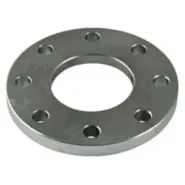-
Cangzhou Yulong Steel Co., Ltd.
-
Phone:
+86 13303177267 -
Email:
admin@ylsteelfittings.com
- English
- Arabic
- Italian
- Spanish
- Portuguese
- German
- kazakh
- Persian
- Greek
- French
- Russian
- Polish
- Thai
- Indonesian
- Vietnamese
- Zulu
- Korean
- Uzbek
- Hindi
- Serbian
- Malay
- Ukrainian
- Gujarati
- Haitian Creole
- hausa
- hawaiian
- Hebrew
- Miao
- Hungarian
- Icelandic
- igbo
- irish
- Japanese
- Javanese
- Kannada
- Khmer
- Rwandese
- Afrikaans
- Albanian
- Amharic
- Armenian
- Azerbaijani
- Basque
- Belarusian
- Bengali
- Bosnian
- Bulgarian
- Catalan
- Cebuano
- China
- China (Taiwan)
- Corsican
- Croatian
- Czech
- Danish
- Esperanto
- Estonian
- Finnish
- Frisian
- Galician
- Georgian
- Kurdish
- Kyrgyz
- Lao
- Latin
- Latvian
- Lithuanian
- Luxembourgish
- Macedonian
- Malgashi
- Malayalam
- Maltese
- Maori
- Marathi
- Mongolian
- Myanmar
- Nepali
- Norwegian
- Norwegian
- Occitan
- Pashto
- Dutch
- Punjabi
- Romanian
- Samoan
- Scottish Gaelic
- Sesotho
- Shona
- Sindhi
- Sinhala
- Slovak
- Slovenian
- Somali
- Sundanese
- Swahili
- Swedish
- Tagalog
- Tajik
- Tamil
- Tatar
- Telugu
- Turkish
- Turkmen
- Urdu
- Uighur
- Welsh
- Bantu
- Yiddish
- Yoruba

Sep . 28, 2024 15:01 Back to list
Understanding ASME SA 333 Standard for Low-Temperature Service Carbon Steel Pipe Specifications
Understanding ASME SA-333 A Comprehensive Overview
ASME SA-333 is a specification developed by the American Society of Mechanical Engineers (ASME) that outlines the requirements for seamless and welded steel pipes for low-temperature service. It is particularly significant in applications where materials are subjected to subzero temperatures, ensuring that the integrity and performance of the pipe material are not compromised under such conditions.
Historical Context
The development of ASME SA-333 arose from the need for materials that could withstand harsh environments, particularly in industries such as petrochemical, oil and gas, and energy production. As these industries expanded, the demand for reliable materials that could maintain their mechanical properties at low temperatures grew. The specification was established to address these needs, providing guidelines that manufacturers and engineers could follow to ensure that the pipes produced meet necessary safety and performance standards.
Material Grades
ASME SA-333 is distinguished by its classification into several grades, each designed to meet specific strength and toughness requirements suitable for low-temperature applications. The most commonly referenced grades include Grade 1, Grade 6, and Grade 7, among others.
Understanding ASME SA-333 A Comprehensive Overview
Each grade has specific chemical composition and mechanical property requirements that ensure optimal performance in low temperatures.
asme sa 333

Applications
The applications of ASME SA-333 pipes are diverse, spanning various industries. In the petroleum industry, these pipes are used extensively in pipelines transporting natural gas and cryogenic liquids. They are also critical components in liquefied natural gas (LNG) facilities, where the materials must be capable of handling extremely low temperatures without risk of failure.
Furthermore, ASME SA-333 pipes are frequently employed in power generation facilities, including nuclear power plants, where low-temperature service environments are common. The reliability and durability of these pipes are paramount, directly impacting the safety and efficiency of operations.
Manufacturing Considerations
When producing pipes that comply with ASME SA-333, manufacturers must adhere to stringent quality control measures. This includes thorough testing of material properties such as tensile strength, impact resistance, and elongation, ensuring that the final product meets the required standards. Non-destructive testing (NDT) methods, such as ultrasonic testing and radiographic evaluation, are also commonly employed to identify any imperfections or weaknesses in the material.
Furthermore, manufacturers often provide documentation and certification to attest that their products conform to ASME SA-333 standards. This documentation is critical for engineers and purchasers who need assurance that the materials they are using will perform as expected in challenging environments.
Conclusion
ASME SA-333 plays a crucial role in the production of pipes capable of performing in low-temperature environments. By providing a detailed framework for material grades, applications, and manufacturing standards, it ensures that industries relying on these materials can operate safely and efficiently. As technology advances, the relevance of ASME SA-333 remains significant, underscoring the importance of continued adherence to quality and safety standards in material engineering.
Latest news
-
ANSI 150P SS304 SO FLANGE
NewsFeb.14,2025
-
ASTM A333GR6 STEEL PIPE
NewsJan.20,2025
-
ANSI B16.5 WELDING NECK FLANGE
NewsJan.15,2026
-
ANSI B16.5 SLIP-ON FLANGE
NewsApr.19,2024
-
SABS 1123 FLANGE
NewsJan.15,2025
-
DIN86044 PLATE FLANGE
NewsApr.19,2024
-
DIN2527 BLIND FLANGE
NewsApr.12,2024
-
JIS B2311 Butt-Welding Fittings LR/SR 45°/90° /180°Seamless/Weld
NewsApr.23,2024











